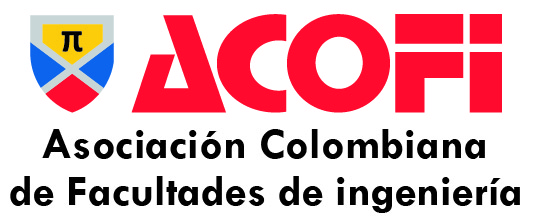Travel time prediction of contaminant transport in sandy soil
DOI:
https://doi.org/10.26507/rei.v7n13.25Keywords:
contaminant transport, sandy soil, travel timeAbstract
A great number of human activities, such as agriculture, ranching, mining and oil extraction, are responsible for the human development, cause negative environmental impacts. This study focuses on travel time determination expending by some product coming from petroleum industry: car’s oil, which can affect the ground when a spill occurs. Plexiglass columns, with four experimental sampling ports located each 15 cm, and a multipoint pumping were used in this experiment. The sandy soil was saturated with a saline tracer to control the variables that could affect the contaminant transport due to air presence where gaseous phase of could move into them. Once saturated conditions were confirmed, the oil was injected in an upward flow, at sample intervals of five minutes during four hours.
The findings provide an approximation of dispersivity equivalent to 1,27m2/day, when soils had a gradation between the sieve No. 4 and No. 50; the travel time in this case was 8.8 days. Likewise, for a medium with gradation between sieve No. 50 and No. 200, the dispersivity value was 0.741m2/day and the travel time was 8.9 days. These results allow inferring that in the way as the grain size decreases, so does the ability to move fluid in the environment and therefore the greater travel time. The procedure established in this experimental work can be used for other types of compounds, although the technique must be improved before be used in the field. It is also recommended further study to confirm the approximations made.
Downloads
References
Brusseau M.L., Nelson, N.T. and Constanza-Robinson, M.S. (2003). Partitioning tracers tests for characterizing immiscible-fluid saturations and interfacial areas in the Vadose zone. Vadose Zone Journal, 2, 138-147.
Carcione J.M., Seriani, G. y Gei, D. (2003). Acoustic and electromagnetic properties of soils saturated with salt water and NAPL. Journal of Applied Geophysics, 52(4), 177-191.
Duarte, D. A. (2010). Estudio de movilidad de LNAPLs en un sistema saturado unidimensional: caso sueloarenoso entre tamiz no. 4 a No. 50, Trabajo de grado de Ingeniería Civil, Universidad Pontificia Bolivariana Seccional Bucaramanga.
Fetter C.W. (2001). Contaminant Hydrogeology. (2da. Edición). Illinois: Waveland Press, INC.
Jalbert, M. y Dane, J. H. (2001). Correcting laboratory retention curves for hydrostatic fluid distributions. Soil Science Society of America Journal, 65(3), 648-654.
Lee, J.Y., Cheon, J.Y., Lee, K. K., Lee, S.Y. y Lee, M.H. (2001). Factors affecting the distribution of hydrocarbon contaminants and hydrogeochemical parameters in a shallow sand aquifer. Journal of Contaminant Hydrology, 50(1-2), 139-158.
Maila, M. y Cloete, T.E. (2005). The use of biological activities to monitor the removal of fuel contaminants—perspective for monitoring hydrocarbon contamination: a review. International Biodeterioration & Biodegradation, 55(1), 1–8
Margesin, R. y Schinner, F. (1997). Bioremediation of diesel-oil contaminated alpine soil at low temperatures. Applied Microbiology and Biotechnology, 47(4), 462–468.
Mikkonen, A., Hakala, K. P., Lappi, K., Kondo, E., Vaalama, A., Suominen, L. (2012). Changes in hydrocarbon groups, soil ecotoxicity and microbiology along horizontal and vertical contamination gradients in an old landfarming field for oil refinery waste. Environmental Pollution, 162, 374-380
Oostrom, M., White, M.D., Lenhard, R. J., Van Geel, P.J., y Wietsma, T.W. (2005). A comparison of models describing residual NAPL formation in the Vadose zone. Vadose Zone Journal, 4(1), 163-174.
Prieto, Ivan Dario (2011). Estudio de movilidad de LNAPLs en un sistema saturado unidimensional: caso suelo arenoso entre tamiz N°. 50 a N°. 200. Trabajo de grado de Ingeniería Civil, Universidad Pontificia Bolivariana Seccional Bucaramanga.
Rizvi Syed Q. A. (2009). A comprehensive review of lubricant chemistry, technology, selection, and design. Library of Congress Cataloging-in-Publication Data, Baltimore: ASTM International.
Robertson, G .P. y. Groffman, P.M. ( 2007). Nitrogen transformation. Biochemistry and Echology. Springer, New York.
Serrano, J. H. y Restrepo D.. ( 2006), Protección ambiental y producción mas limpia. Parte 1 y 2. Editorial Academia.
Serrano-Guzmán, Maria F. (2008), Detection and Monitoring of DNAPLs in the subsurface under transient conditions using Cross Well Radar, PhD. Dissertation. Universidad de Puerto Rico, Recinto Universitario de Mayaguez.
Serrano-Guzmán, M.F., Perez Ruiz, D.D., Puppala, A., Padilla. I. (2010). CWR: alternativa para deteccion de NAPLs. Puente Revista Científica, 5(2), 25-35.
Serrano-Guzmán, M.F. (2011). Propiedades dieléctricas de suelos afectados por NAPLs, Ponencia en Jornada de Investigación, Universidad Pontificia Bolivariana Seccional Bucaramanga.
Siciliano, S.D., Germida, J.J., Headley, J.V. (1997). Evaluation of prairie grass species as bioindicators of halogenated aromatics in soil. Environmental Toxicology and Chemistry, 16, 521–527.
Downloads
Published
How to Cite
Issue
Section
License
Total or partial reproduction of the documents published in the journal is authorized only when the source and author are cited.
| Article metrics | |
|---|---|
| Abstract views | |
| Galley vies | |
| PDF Views | |
| HTML views | |
| Other views | |









